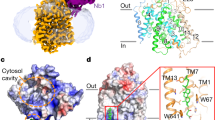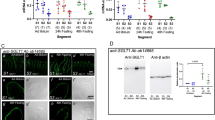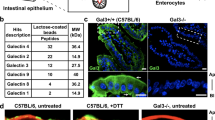Abstract
GLUCOSE is actively transported across the intestinal epithelium from the lumen of the gut into the blood in vivo or into the fluid surrounding the serosal mesothelium in vitro. Because part of the glucose is metabolized during transport, it is not possible to determine the concentration of the unaltered sugar in the various layers of the intestine. However, 3-O-methylglucose, though transported by the same mechanism which acts on glucose1, is not metabolized in animal tissue2,3. The synthesis of 3-O-14CH3-glucose in this laboratory3 offered a method of following with reasonable accuracy the route of this sugar during transport.
This is a preview of subscription content, access via your institution
Access options
Subscribe to this journal
Receive 51 print issues and online access
$199.00 per year
only $3.90 per issue
Buy this article
- Purchase on Springer Link
- Instant access to full article PDF
Prices may be subject to local taxes which are calculated during checkout
Similar content being viewed by others
References
Csáky, T. Z., Supp. Int. Abstracts Biol. Sci., 6 (1958).
Csáky, T. Z., and Glenn, J. E., Amer. J. Biol., 188, 159 (1957).
Csáky, T. Z., and Wilson, J. E., Biochim. Biophys. Acta, 22, 185 (1956).
Csáky, T. Z., and Fernald, G. W., Amer. J. Physiol., 198, 445 (1960).
Author information
Authors and Affiliations
Rights and permissions
About this article
Cite this article
CSÁKY, T., FERNALD, G. Localization of the ‘Sugar Pump’ in the Intestinal Epithelium. Nature 191, 709–710 (1961). https://doi.org/10.1038/191709a0
Issue Date:
DOI: https://doi.org/10.1038/191709a0
Comments
By submitting a comment you agree to abide by our Terms and Community Guidelines. If you find something abusive or that does not comply with our terms or guidelines please flag it as inappropriate.



